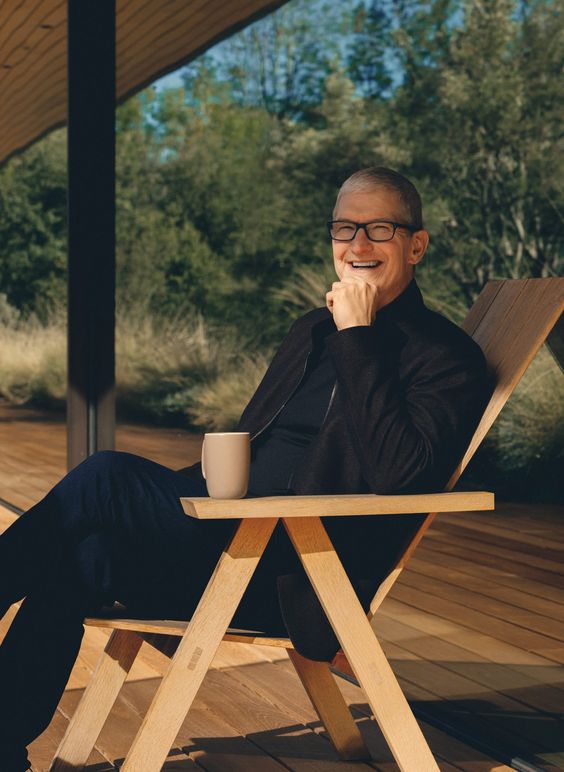Re-architecting Apple with AI

[CEONEWS = Jun Young-sun] “Has Apple grown old?” The market whispered that once. Reality said otherwise. Tim Cook turned a “momentum-driven Apple” back into a “re-ignited growth engine,” reshaping profitability by fusing hardware with services. Today Apple’s single keyword is Apple Intelligence—a “personal intelligence” strategy built on on-device processing and privacy. The moment this lands as a felt, everyday upgrade, Apple will once again define the standard of experience.
■iPhone reignition and services outperformance

Cook’s fundamentals don’t waver. With each generational shift, iPhone demand is reignited and quarterly records fall. Services—bundling subscriptions, cloud, payments, and advertising—have built a powerful flywheel of recurring revenue. Purchasing hardware is no longer the end but the beginning: content flows within the device, payments attach, storage and security expand. The result is a “garden” where people stay longer once they enter.
The more interesting shift is in demand quality. Even as North America and China swing like a pendulum, Apple has fine-tuned pricing, channels, and promotions to confirm a resilient baseline. Short-term volatility exists, but ecosystem loyalty, high resale values, and long software-update lifecycles flatten the demand curve.
■Tim Cook’s AI engineering: “Closer model” over “Bigger model”

The essence of Apple Intelligence isn’t a gigantic model. It’s an on-device-first architecture that reads a user’s context safely on the device and taps the cloud only when necessary. System-wide writing tools, a more capable Siri, and “priority summaries” for notifications, mail, and documents shave off everyday friction. AI doesn’t appear on center stage; it steps behind the interface to quietly intervene throughout the day.
Selective linkage to external models is another hallmark. With user consent, Siri and writing tools can “delegate questions” to outside AI. If Apple can’t or shouldn’t handle everything natively, it connects edge capabilities as adapters to complete the experience. It’s not about the brand of AI—it’s about the experience. That’s Apple’s cool-headed stance.
■Supply-chain surgery: the meaning of “Made in India”
Geopolitics is real, and Cook answers it with operations. As China concentration risks rose, Apple accelerated production in India—expanding local partners, optimizing customs and component logistics, and training talent. The payoff is a simultaneous remap of cost, lead time, and risk.
Trade shocks in the US and Europe are hedged by capacity in India and Southeast Asia, while local investment narratives serve as political shields. Cook is proving an old truth in the most modern way: the factory is strategy.
■Europe’s regulatory front: a battlefield of rules

Europe is aiming squarely at Apple’s success formula. Loosening app distribution and payments rules, removing anti-steering limits, and opening side-loading paths all amount to a structural demand: “open the walled garden.” For Cook, this isn’t just a tech issue; it’s a rule-setting war.
But openness isn’t synonymous with defeat. If new fees, security certifications, and alternative-payment rails take shape, regulation becomes both a cost and a potential business model. The fate of Apple’s approach hinges on designing “safe openness.”
■Ending comparisons with Jobs: “Big all at once” vs. “Precisely to the end”
If the Jobs era is remembered for category-creating explosions, the Cook era is defined by error-free scaling. From Apple Silicon to product lines, to subscriptions, to payments and ads, and now to AI, Apple stitches each layer of vertical integration with precision to maximize the total effect.
The weakness of this method is a lack of “drama,” and Cook has often been underrated because of it. But the “boring numbers”—results, cash generation, time-in-ecosystem, and NPS—speak for him. “Slowly, but exactly.” Cook’s leadership pays interest on the market’s patience.
■Tim Cook’s dilemmas—and the fixes
The biggest dilemma is the trade-off between speed and trust. Move fast and completeness suffers; insist on completeness and critics call it “slow.” Apple lays privacy, security, and accessibility—the invisible values—as default settings for AI experiences. Principles over fashion, safety over optics. Those constants build long-term trust.
A second dilemma is balancing closure and openness. A sturdy ecosystem can be reinterpreted as “dominance.” The path forward is clear: broaden user choice while raising quality and safety bars—lower the threshold, strengthen the gatekeeper’s responsibility.
■“Overrated present vs. underrated next”

Tim Cook isn’t a caretaker. He’s a quiet radical designing Apple’s next decade. As AI sands down the friction of daily life, as supply chains absorb geopolitics, and as regulation sets a new order, Cook expands the empire by moving big without talking big.
In the end the headline will be simple: “Jobs opened the door; Cook completed the empire.” And that completion won’t be a bigger closure—but a safer openness. When Apple resets the market’s standard again, we’ll feel it not as more time spent on a smartphone, but as more time spent smartly.
Reporter’s one-liner
“Tim Cook’s leadership isn’t about a single big bang—it’s accumulation. The moment Apple Intelligence lands in daily life, that accumulation will look like a revolution.”

